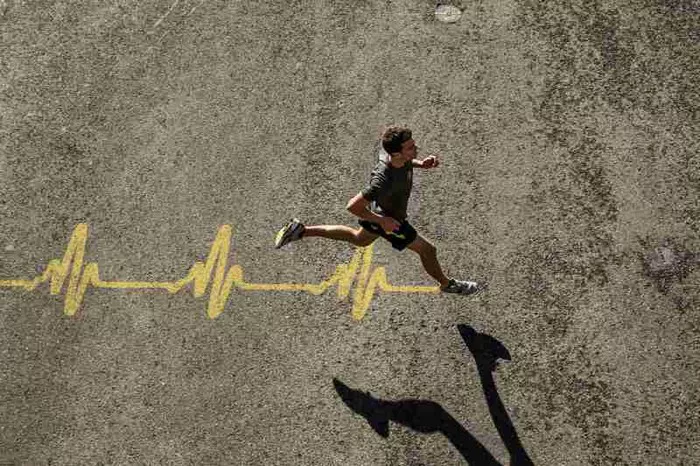Cholesterol plays a crucial role in the human body, serving as a building block for cell membranes and a precursor for hormones and vitamins. However, not all cholesterol is created equal. There are two primary types: low-density lipoprotein (LDL), often referred to as “bad” cholesterol, and high-density lipoprotein (HDL), known as “good” cholesterol. Elevated levels of LDL cholesterol are associated with an increased risk of cardiovascular diseases, including heart attacks and strokes. Conversely, higher levels of HDL cholesterol can help protect against these conditions by facilitating the removal of LDL cholesterol from the bloodstream.
Physical activity has been widely recognized as a key factor in managing cholesterol levels. Regular exercise not only helps to lower LDL cholesterol but also raises HDL cholesterol, contributing to an overall healthier lipid profile. This article will delve into how various forms of physical activity impact cholesterol levels, the mechanisms behind these effects, and the recommended exercise guidelines for optimal cardiovascular health.
The Relationship Between Physical Activity And Cholesterol Levels
Cholesterol is a waxy substance found in your blood. While your body needs it to build healthy cells, having high levels of LDL cholesterol can increase your risk of heart disease. Conversely, HDL cholesterol helps remove other forms of cholesterol from your bloodstream, thus playing a protective role against heart disease.
The Impact of Exercise on Cholesterol
Numerous studies have demonstrated that regular physical activity can lead to significant improvements in lipid profiles:
Increase in HDL Cholesterol: Aerobic exercises such as running, cycling, and swimming have been shown to increase HDL cholesterol levels. A meta-analysis indicated that aerobic exercise could raise HDL cholesterol by approximately 2.53 mg/dL when performed at moderate intensity.
SEE ALSO: Can High Cholesterol Be Fixed with Exercise?
Reduction in LDL Cholesterol: While the effects on LDL cholesterol can vary based on the intensity and duration of exercise, many studies suggest that regular physical activity can lead to reductions in LDL levels. For example, a systematic review found that both low- and moderate-intensity aerobic exercise resulted in significant reductions in total cholesterol and LDL levels.
Effects on Triglycerides: Exercise also positively affects triglyceride levels, which are another type of fat found in the blood. High triglyceride levels can increase the risk of heart disease. Regular physical activity has been associated with lower triglyceride levels.
Types of Physical Activity Beneficial for Cholesterol
Different forms of exercise can have varying effects on cholesterol levels:
Aerobic Exercise: Activities such as jogging, cycling, swimming, and brisk walking are particularly effective at improving HDL cholesterol and lowering LDL cholesterol. The American Heart Association recommends at least 150 minutes of moderate aerobic activity or 75 minutes of vigorous activity each week.
Resistance Training: While aerobic exercise is more effective for raising HDL levels, resistance training (weight lifting) also plays a role in improving overall cardiovascular health and can contribute to lowering LDL cholesterol when combined with aerobic activities.
High-Intensity Interval Training (HIIT): This form of exercise alternates short bursts of intense activity with periods of rest or lower-intensity exercise. Some studies suggest that HIIT may be more effective than steady-state cardio for improving lipid profiles due to its impact on fat metabolism.
Lifestyle Activities: Incorporating more movement into daily routines—such as walking instead of driving or taking the stairs—can also contribute to better cholesterol management over time.
Mechanisms Behind Exercise-Induced Changes in Cholesterol
Understanding how physical activity affects lipid metabolism is essential for appreciating its benefits:
Increased Enzyme Activity: Exercise enhances the activity of enzymes responsible for breaking down fats and transporting them through the bloodstream. This process helps reduce LDL levels while promoting HDL production.
Weight Management: Regular physical activity aids in weight loss or maintenance, which is critical since excess body weight is linked to higher LDL cholesterol levels. Losing even a small amount of weight can lead to significant improvements in lipid profiles.
Improved Insulin Sensitivity: Exercise enhances insulin sensitivity, which helps regulate blood sugar levels and fat metabolism. Improved insulin sensitivity is associated with lower triglyceride levels and higher HDL levels.
Enhanced Lipid Oxidation: During physical activity, the body increases its reliance on fat as a fuel source, which can lead to improved lipid profiles by utilizing stored fats more effectively.
Recommended Exercise Guidelines
To achieve optimal benefits for cholesterol management through physical activity, consider the following guidelines:
Frequency: Aim for at least 150 minutes of moderate-intensity aerobic exercise per week or 75 minutes of vigorous-intensity aerobic exercise spread throughout the week.
Duration: Each session should last at least 30 minutes; however, shorter sessions can be accumulated throughout the day.
Intensity: Incorporate a mix of moderate and vigorous activities into your routine. Moderate activities include brisk walking or light cycling, while vigorous activities include running or high-intensity interval training.
Strength Training: Include resistance training exercises at least two days per week to complement aerobic activities.
Conclusion
Regular physical activity plays a vital role in managing cholesterol levels and reducing the risk of cardiovascular diseases.
By increasing HDL cholesterol while lowering LDL cholesterol and triglycerides, exercise contributes significantly to overall heart health. A combination of aerobic exercises, resistance training, and lifestyle changes can yield substantial benefits for individuals looking to improve their lipid profiles.
Incorporating these activities into daily routines not only enhances physical fitness but also promotes long-term health benefits. As always, individuals should consult with healthcare professionals before starting any new exercise program—especially those with existing health concerns—to ensure safety and effectiveness tailored to their specific needs.
Related topics:
- Is Rice Harmful to Cholesterol?
- How Hyperlipidemia Cause Pancreatitis
- When Is The Best Time to Exercise for High Cholesterol

